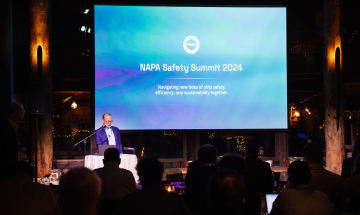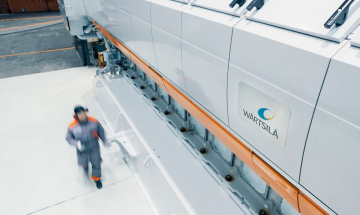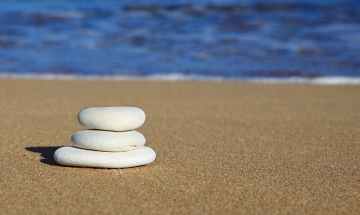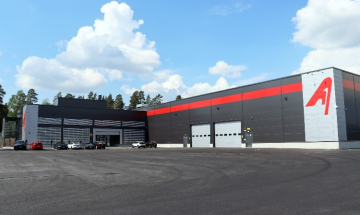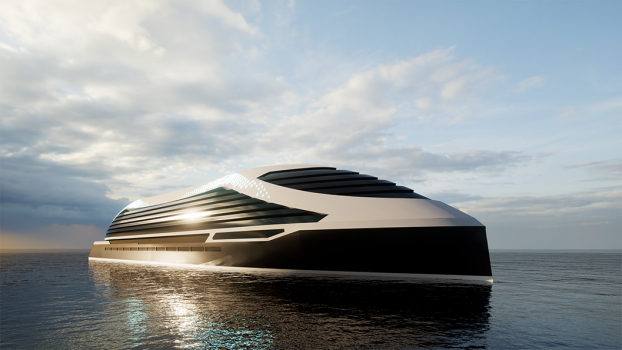
NEcOLEAP: Light Steel Structure — a breakthrough in steel structures
In the green transition project NEcOLEAP, our goal is defined as as strengthening and expanding the innovative research and development work of the shipbuilding ecosystem. One of NEcOLEAP's most important drivers is reducing emissions.
"NEcOLEAP enables us to research and work on new objects, materials and methods," says Ari Niemelä. He is a shipbuilder who has graduated from Aalto University and heads the basic hull design at Meyer Turku. A key part of the department's activities is the "Carbon-neutral Lightweight ship structures" project, which focuses on reducing the carbon footprint and weight of the ship's hull and load-bearing equipment components. At the shipyard, the whole hull design team is working with these challenges in some way.
Ari emphasizes, that "neither this is done alone, but in cooperation with a significant network. In addition to Meyer Turku and partner companies (SSAB, Suisto Engineering, Mobimar, Refamo, Canelis), the academia is involved in the development project through Aalto University, University of Turku and Lappeenranta-Lahti University of Technology. The project has a direct connection to our sustainability strategy, in which we are committed to developing a climate-neutral cruise concept by 2025.
The heaviest single system in the ship is the steel hull. It represents about a half of the ship's total weight, so it is easy to understand how central the development of steel is also in terms of sustainable development. "All the changes made to the hull are significant," confirms Ari.
One of the strategic long-term goals of hull design is reducing the weight of the ship. Through it, we can affect the environmental load of the ship, but also offer the customer new opportunities to implement shared visions. "Without the common projects with the universities, we would not have been able to offer, for example, the hull and cabin concepts the customer wanted for the ICON ship," Ari gives a practical example.
"During the years-long concept design phase we studied steel, and based on the strength tests we performed, we were able to propose the use of a new type of high-strength steel in critical hull structures. The strength of this new steel is three times that of A-class steel (from which hull structures requiring a moderate stress level are made) and twice as strong as the more commonly used high-strength steel. Classification institutions did not recognize such a product, and at our initiative, our partner SSAB certified it for ship steel use. This is the first time that a similar type of steel is used in civilian shipbuilding," says Ari. He continues: "A significant part of the ship's emissions is caused by propulsion, i.e. the operation of the propeller equipment. When the structure of the ship is lightened, the work of the propulsion is also reduced. During the ship's 30-40 years of operation, the benefits are multiplied and their importance is enormous. The carbon-free fuels of the future, new machinery solutions, intelligent operation, etc. complement the reduction of the environmental impact."
Steel production at SSAB's steel plant in Raahe causes more than 7% of Finland's carbon dioxide emissions. A significant part comes from the reduction of iron, for which hydrogen and carbon-free energy will be used in the future. Wind, water, solar and nuclear power will play a key role. SSAB is committed to starting the production of carbon-free steel in 2026. Ari believes that a climate-neutral ship hull will be possible by the end of the decade.
Within the scope of NEcOLEAP, there are plans to continue research into the fact that the ship's decks, which are several hectares in a large cruiser, could be made of a thinner material than the current one. Until now, five millimeters has been considered the "sacred" limit. The goal is to also lighten load-bearing equipment structures. For example, ICON will have about a thousand tons of glass structures. The aim is to make the glass thinner and the metal structures lighter, for example by supporting external structures with internal ones. Welding technology is also being developed, resulting in more efficient aluminum structures. In the future, aluminum may also be used in the load-bearing structures of the hull. The strength properties of welded aluminum have a bad reputation, and efforts are now being made to influence that.
There are therefore numerous projects underway both at the shipyard and with our partners. The key word is cooperation. Results are achieved and noted: Aalto University's Marine and Ocean Engineering department was rated the best in Finland and the 21st best in the world in the international Shanghai Ranking of the world's universities this year. Ari Niemelä, on the other hand, has previously been awarded Aalto University School of Engineering Alumnus of the Year, and his design team has been awarded the Finnish Engineering Award for the strength and vibration technical design of the hull structure of the Oasis of the Seas cruise ship.
Read the original press release here
Photo: necoleap.fi
Learn more about the NEcOLEAP research and development project here

